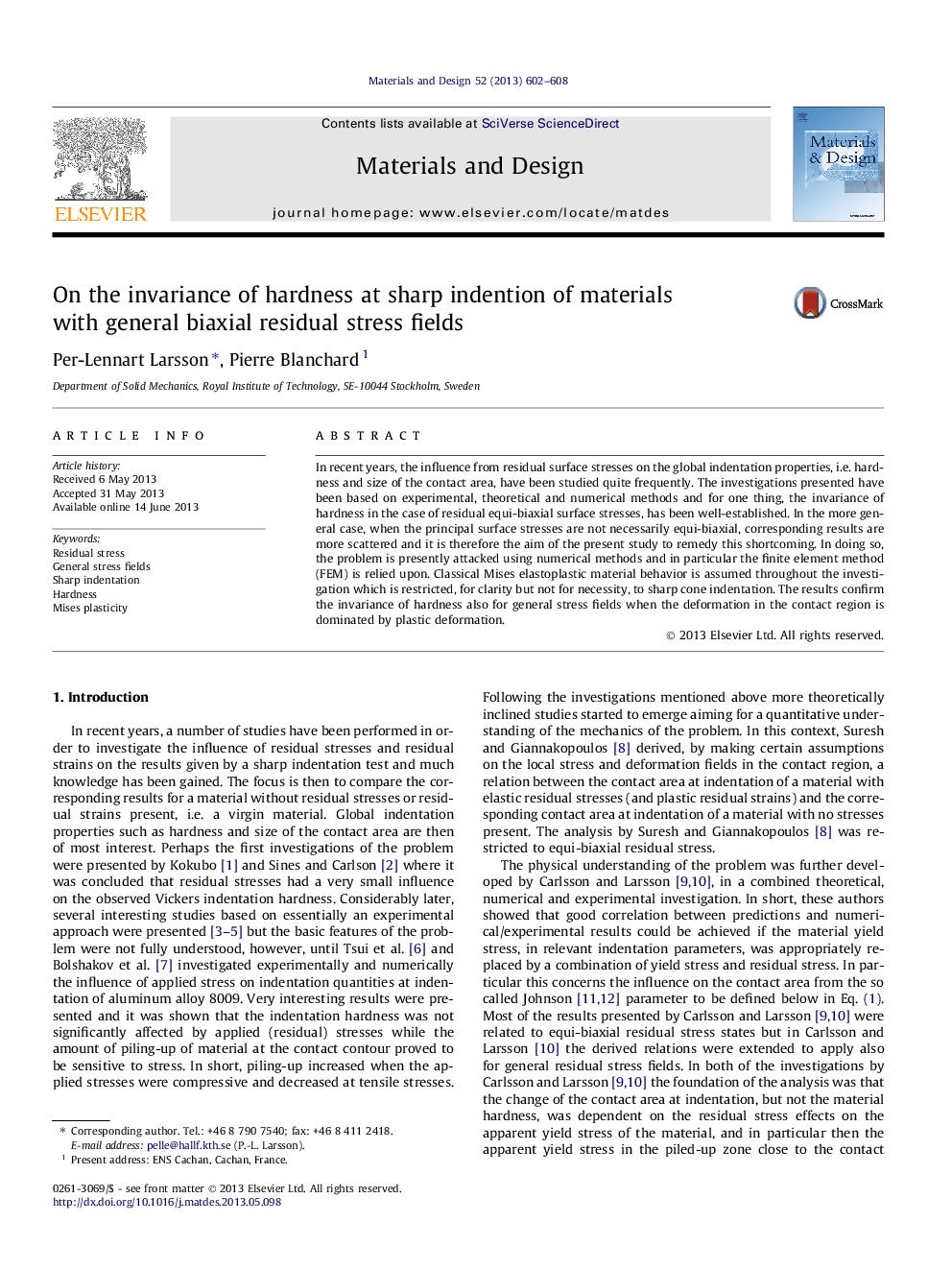| Article ID | Journal | Published Year | Pages | File Type |
|---|---|---|---|---|
| 7221291 | Materials & Design (1980-2015) | 2013 | 7 Pages |
Abstract
In recent years, the influence from residual surface stresses on the global indentation properties, i.e. hardness and size of the contact area, have been studied quite frequently. The investigations presented have been based on experimental, theoretical and numerical methods and for one thing, the invariance of hardness in the case of residual equi-biaxial surface stresses, has been well-established. In the more general case, when the principal surface stresses are not necessarily equi-biaxial, corresponding results are more scattered and it is therefore the aim of the present study to remedy this shortcoming. In doing so, the problem is presently attacked using numerical methods and in particular the finite element method (FEM) is relied upon. Classical Mises elastoplastic material behavior is assumed throughout the investigation which is restricted, for clarity but not for necessity, to sharp cone indentation. The results confirm the invariance of hardness also for general stress fields when the deformation in the contact region is dominated by plastic deformation.
Keywords
Related Topics
Physical Sciences and Engineering
Engineering
Engineering (General)
Authors
Per-Lennart Larsson, Pierre Blanchard,
